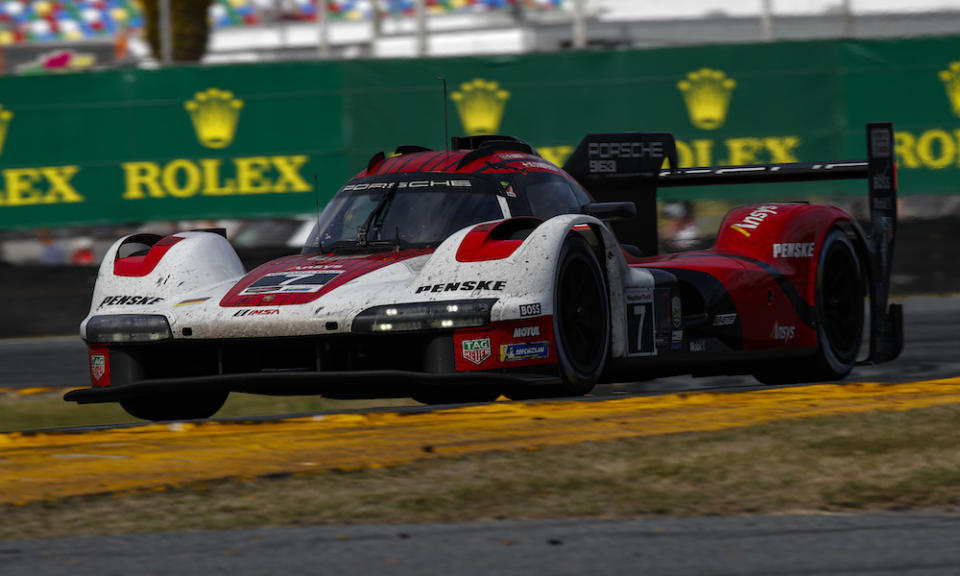The devil’s in the details as PPM tackles year two with the Porsche 963

A year ago, speculation was that the first race of IMSA’s new Grand Touring Prototype era would be a disaster. And certainly several of the cars had their issues, with both Porsche 963s and BMW M Hybrid V8s spending a lot of time in the garage. The big issues with the hybrid units, batteries and controllers were worked out quickly; medium-size issues continued to be worked out through the spring and summer. By the end of the season, it was down to details.
For Porsche, expectations were high as the new GTP era began. The 963 had been the first to hit the track, but the cars succumbed to problems in the season-opening Rolex 24 at Daytona. The No. 7 finished 34 laps down; the No. 6 was parked when the checker fell. But Porsche Penske Motorsports recovered quickly, and was in a position to win the Mobil 1 Twelve Hours of Sebring headed into the final hour. Both PPM squads had a shot at the title headed into the season finale, Motul Petit Le Mans.
Problems have been solved. What the cars want in terms of adjustments and settings – and there are a lot of possible adjustments – are well on their way to being figured out. And while there’s still some sorting to be done, PPM and the other GTP teams are ready to put the “figuring out” part behind them and get down to the business of racing.
“I think the biggest thing is probably the complexity of the car on what brings performance,” explains Jonathan Duguid, PPM managing director. “I think a lot of us come from DPi backgrounds or IndyCar backgrounds where the cars are… I’m not going to say simple, but more clear on what brings performance, whether it’s spring changes or aerodynamic changes.
“With the hybrid car formulas, there’s that as well. And our team specifically has had to get used to different heave and roll damper setups, and things like that, that are new to our group. But on top of that, software integration and electronic braking systems differential integral controllers, and power controllers, and all these other things that are that are in the background that can bring significant performance to the cars and also affect the feedback that the drivers behind the wheel feel.”
That means a raft of engineering additions for the GTP cars compared to the DPi days. PPM has added Brandon Fry, previously at BMW M Team RLL, to oversee the engineering of its two 963s, for example. But beyond that, there are a many engineers working on the software side, the one open area of development on LMDh/GTP cars.

Porsche Penske Motorsports weathered the expected teething problems with the new Porsche 963 last year. This season is about chasing refinements across the car and the team in search of more speed and reliability. Jake Galstad/Motorsport Images
“There’s a large group of people in the background that are supporting the software system,” Duguid continues.
“So I think operationally, it’s trying to figure out how to be efficient with information flow and programming changes and communications to the race engineers and to the drivers and everything like that. That’s probably the biggest step that we’ve taken from last year, is trying to figure out how to utilize all the support that we have efficiently at the racetrack to make the right decisions on all these different software systems in the background that are that are driving the performance of the car.”
Porsche is making a few physical changes to the car as well. Homologation updates in the off season have all focused on reliability.
“The aerodynamics, all those things, they look the same. There are a number of details,” says Urs Kuratle, director of Factory Racing for Porsche Motorsport. “Sometimes it’s a material change, where a fitting used to be out of aluminum, and due to reliability reasons, we change to steel or things like this. There are minor details like this. It’s a relatively small list on parts.”
Development and a greater understanding of the GTP cars won’t stop, even if it the improvements get smaller and smaller. But with the bigger things out of the way, there are things that can now receive attention that couldn’t be studied before, and focus turns to how one small change here makes a change over there.
“We’ve checked all the boxes on the first order of things and the things that are lower-hanging fruit,” Duguid says. “Now we’re going down into the details of how everything works together. The first order things, yes, they’re becoming more normal, and we can make sure those are all in the right place. But now the development just goes to the second-season approach, where we’re starting to look way more into the details of what’s affecting everything and tire temperatures and things like that, that we may have not had the opportunities to look at in the first racing season. So the development of the cars never stops, it’s just become more efficient, so you have more time to look at other things. That’s really what we’re focusing on, the detailed-level approach.”
Three days of relatively trouble-free running at the Roar Before the 24 seem to indicate that the GTP cars, not just from Porsche but Acura, BMW and Cadillac as well, are ready to go racing for 24 hours. Sunday afternoon will tell who nailed the details.

 Yahoo Autos
Yahoo Autos 